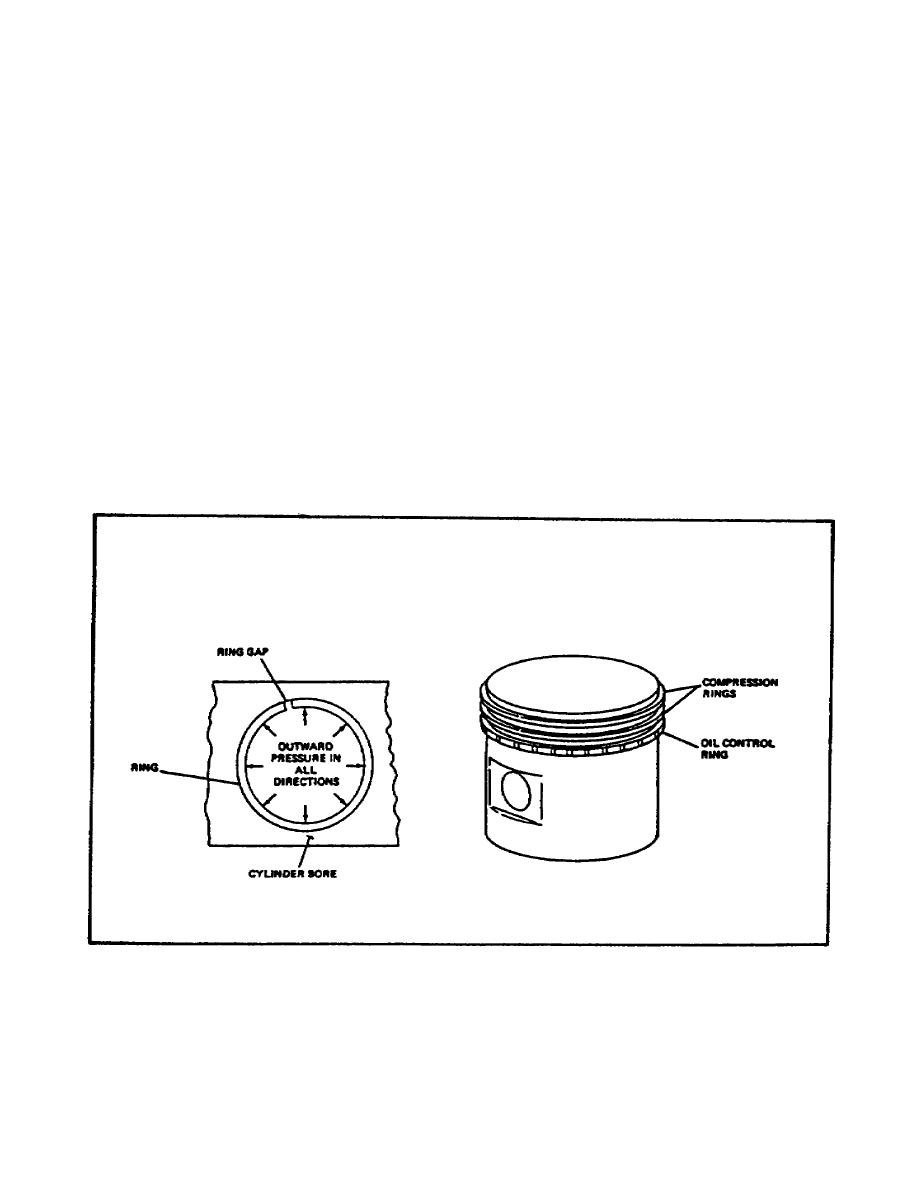
PRIN. OF INTERNAL COMBUSTION ENGINES - OD1619 LESSON 1/TASK 1
(b) They prevent the lubricating oil from bypassing the piston and getting
into the combustion chamber from the crankcase.
(c) They provide a solid bridge to conduct the heat from the piston to the
cylinder wall. About onethird of the heat absorbed by the piston passes to the
cylinder wall through the piston rings.
(2) Description (figure 19). Piston rings are split to allow for installation
and expansion, and they exert an outward pressure on the cylinder wall when
installed. They fit into grooves that are cut into the piston, and are allowed to
float freely in these grooves. A properly formed piston ring, working in a
cylinder that is within limits for roundness and size, will exert an even pressure
and maintain a solid contact with the cylinder wall around its entire
circumference. Although piston rings have been made from many materials, cast iron
has proved most satisfactory as it withstands heat, forms a good wearing surface,
and retains a greater amount of its original elasticity after considerable use.
There are two basic classifications of piston rings.
(a) The Compression Ring. The compression ring seals the force of the
exploding mixture into the combustion chamber.
FIGURE 19. PISTON RING TYPES AND DESCRIPTION.
21





 Previous Page
Previous Page
